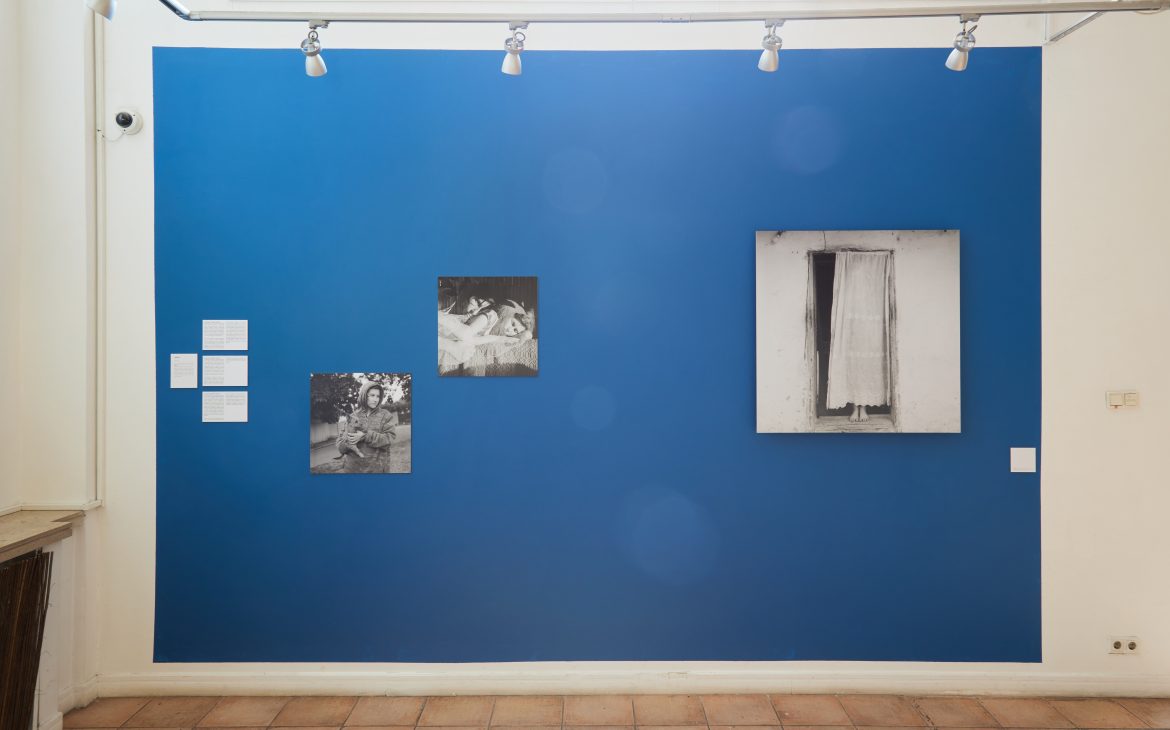Maria Guțu (b. 1996, Glodeni, Republic of Moldova) studied at the Academy of Music, Theater and Fine Arts in Chisinau and online at the Docdocdoc photography school, Saint Petersburg. She is particularly interested in the notion of youth, isolated spaces and the connection between man and his environment. Since 2021, Maria Guțu is a member of WomenPhotograph. In 2022, she was selected for the Sony World Photography Awards, Open Competition: Portraiture. In 2023, she was selected with a photograph in the Homeland project at the Sony World Photography Awards and National & Regional Awards. At the same time, she benefited from a mentoring grant awarded by the Foundation for Photography in the Balkan area-VID (2023). She participated in collective exhibitions in Romania, France and the United States.
Dana Pârvulescu: Please tell me a few words about yourself, your artistic practice, and your artistic process during the residency.
Maria Guțu: My artistic practice consists of the photographic documentation of places, people and their connection between them and nature. In the residency, I mostly documented people who piqued my curiosity: young people, farmers, and shepherds. I documented abandoned houses observed following a spontaneous road trip through Nifon, Geaferca, Hamcearca, Balabancea and Florești villages. We walked through the forest; the air was cool and clean, and the trees were majestically beautiful. The villages I passed through reminded me of those in the Republic of Moldova: abandoned houses, beautiful landscapes, and people with animals outside; an important difference discovered is the picture of Ceaușescu on the wall of an abandoned house.
D.P.: What were your expectations before starting residency, and how have they changed along the way?
M.G.: I had no expectations per se. I tried not to have them, and later, I enjoyed the journey and the residency that I was going to complete.

D.P.: What impact has the local community had on your art? Have you interacted with the locals or integrated elements from their everyday proximity in your works?
M.G.: I had discussions with the locals. I met with Alexandru, a nice shepherd from the Danube; we had long existentialist discussions about the lack of fear of a potential war…I noticed how much closer people are to the earth and nature, the less the fear of death. The impact of the local community has been inspirational; I would like to take the people’s courage, honesty and openness into my artistic practice as well as everyday life.
D.P.: What did you learn from the interactions with the flora and fauna of Dobrogea? Is there a story or incident that marked you and that you have translated into your works?
M.G: I learned from the interactions with the flora and fauna of Dobrogea that everything requires care and time. I liked to get lost a little in the nature of Dobrogea. On the second day of my stay, I found a small space adjacent to the Danube, wild, covered with vegetation, large and shady trees, and many birds that get scared and fly away when they feel you nearby. I felt like I was in a dream, cut off from any social context; the more I advanced through the puddle, the more I transposed myself into the role of a little National Geographic explorer, facing the creepers to advance towards the unknown. I found a bed there, which involuntarily reminded me of Nirvana’s cover, Where did you sleep last night? originally sung by Leadbelly, the bed being the only evidence that there was a human foot in this small jungle.

D.P.: What is the source of your interest in interdisciplinary projects?
M.G.: The source of my interest in interdisciplinary projects is curiosity, the desire to cross paths with people from various fields, more or less adjacent to photography.
D.P.: How did this experience change your perspective on the artist’s role in a rural space?
M.G.: I think I understood even more that the role of the artist in a rural space is much more vast and complex than I thought; besides the fact that he interacts with the local community, he can intervene in certain situations, can propose new actions, interventions.
D.P.: How will you use the experiences from the residency in your future artistic projects?
M.G.: I will try to be as open and optimistic about new experiences and travels as possible.
D.P.: What plans do you have for this fall? Are we going to see you somewhere, and if so, where?
M.G.: This fall, I plan to take care of my photo archive and develop some more films. I predict an exhibition at the end of the month in the village of Sofia, Drochia, in the Republic of Moldova, where I had a residency in August.







